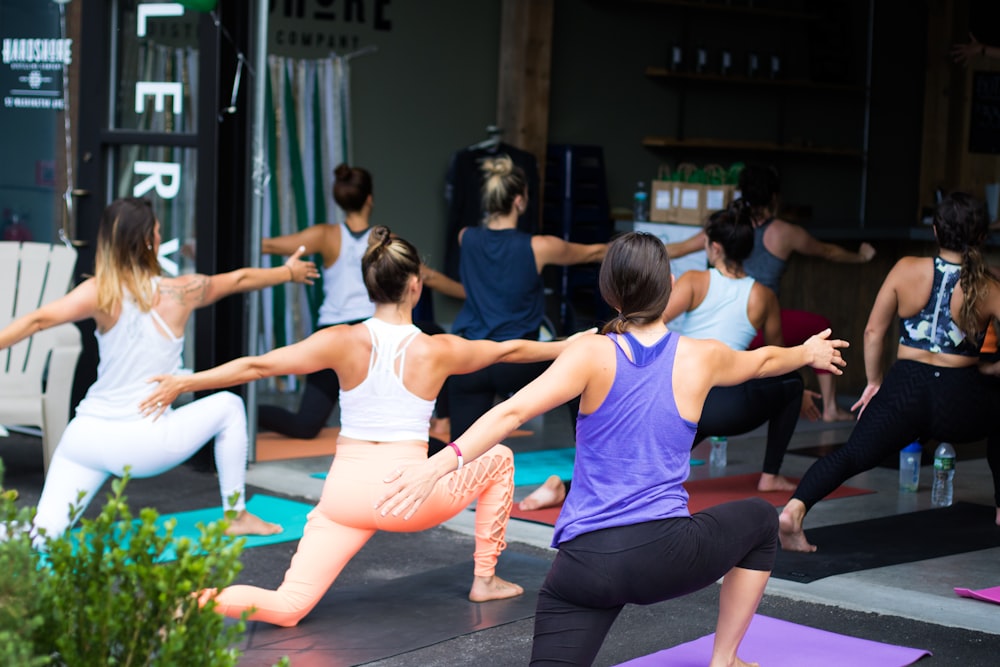The Evolution and Popularity of Yoga

Yoga, an ancient practice originating from the Indian subcontinent, has transcended time and culture to become a global phenomenon. Its popularity spans continents, attracting millions of practitioners seeking physical, mental, and spiritual well-being. In this comprehensive exploration, we delve into the origins of yoga, its historical evolution, and the myriad factors contributing to its widespread appeal in contemporary society.
Origins of Yoga:
The roots of yoga can be traced back over 5,000 years to the ancient Indus Valley civilization in India. Initially, yoga was developed as a spiritual practice aimed at achieving harmony between the mind, body, and spirit. The earliest forms of yoga were documented in ancient texts such as the Vedas, Upanishads, and the Bhagavad Gita. These texts elucidate the philosophical underpinnings of yoga, emphasizing self-discipline, meditation, and ethical living as pathways to spiritual enlightenment.
Historical Evolution:
Throughout history, yoga underwent significant transformations, adapting to the cultural and societal shifts of different eras. The classical period of yoga, as outlined in Patanjali's Yoga Sutras around 400 CE, codified the principles of Ashtanga (eight-limbed) yoga, which encompass ethical guidelines, physical postures (asanas), breath control (pranayama), concentration, meditation, and spiritual absorption (samadhi). This systematic approach laid the foundation for various yoga styles and practices that emerged in subsequent centuries.
During the medieval period, yoga flourished under the guidance of revered yogis and scholars like Swami Sivananda, Swami Vivekananda, and T. Krishnamacharya. Krishnamacharya, often referred to as the father of modern yoga, pioneered the adaptation of yoga as a therapeutic tool for physical and mental health. His disciples, including B.K.S. Iyengar, K. Pattabhi Jois, and Indra Devi, further popularized yoga by introducing distinct styles such as Iyengar, Ashtanga, and Hatha yoga, respectively.
In the 20th century, yoga experienced a resurgence in the West, spurred by increased interest in Eastern spirituality, alternative medicine, and holistic wellness practices. Influential figures like Paramahansa Yogananda, Maharishi Mahesh Yogi, and Swami Vishnudevananda played pivotal roles in introducing yoga to Western audiences through lectures, books, and immersive retreats. This cultural exchange paved the way for the global dissemination of yoga, leading to its integration into mainstream fitness, wellness, and lifestyle industries.
Factors Contributing to Popularity:
Several factors have contributed to the widespread popularity of yoga in contemporary society:
- Health and Wellness Benefits: Yoga offers a holistic approach to health, promoting physical strength, flexibility, balance, and cardiovascular fitness through a combination of asanas and pranayama techniques. Moreover, regular yoga practice has been linked to stress reduction, improved mental clarity, enhanced immune function, and relief from chronic conditions such as hypertension, anxiety, and depression.
- Accessibility and Diversity: The accessibility of yoga, facilitated by the proliferation of yoga studios, online classes, and mobile applications, has made it attainable for individuals of all ages, abilities, and backgrounds. Additionally, the diversity of yoga styles—ranging from gentle restorative practices to dynamic power yoga—caters to varying preferences and goals, allowing practitioners to tailor their practice to suit their needs.
- Mind-Body Connection: Yoga emphasizes the interconnectedness of the mind, body, and breath, fostering self-awareness, mindfulness, and emotional resilience. By cultivating a deeper understanding of one's physical sensations, thoughts, and emotions, yoga empowers individuals to navigate life's challenges with greater ease and equanimity.
- Community and Support: Yoga communities provide a supportive environment for practitioners to connect, share experiences, and foster a sense of belonging. Group classes, workshops, and retreats offer opportunities for social interaction, personal growth, and collective healing, fostering a sense of unity and camaraderie among participants.
- Cultural Appreciation and Globalization: As yoga continues to transcend geographical and cultural boundaries, its integration into mainstream culture reflects a growing appreciation for its rich heritage, philosophical wisdom, and spiritual traditions. This cross-cultural exchange enriches the tapestry of global wellness practices, fostering mutual respect, understanding, and dialogue among diverse communities.
Conclusion:
In conclusion, the evolution and popularity of yoga epitomize the timeless pursuit of holistic well-being and self-discovery. From its ancient origins in the Indian subcontinent to its global embrace in the 21st century, yoga remains a beacon of light, guiding millions of seekers on a transformative journey of inner peace, vitality, and enlightenment. As we honor the wisdom of the past and embrace the diversity of the present, let us continue to nurture the spirit of yoga, embodying its timeless principles of unity, harmony, and compassion in our lives and communities.



























































